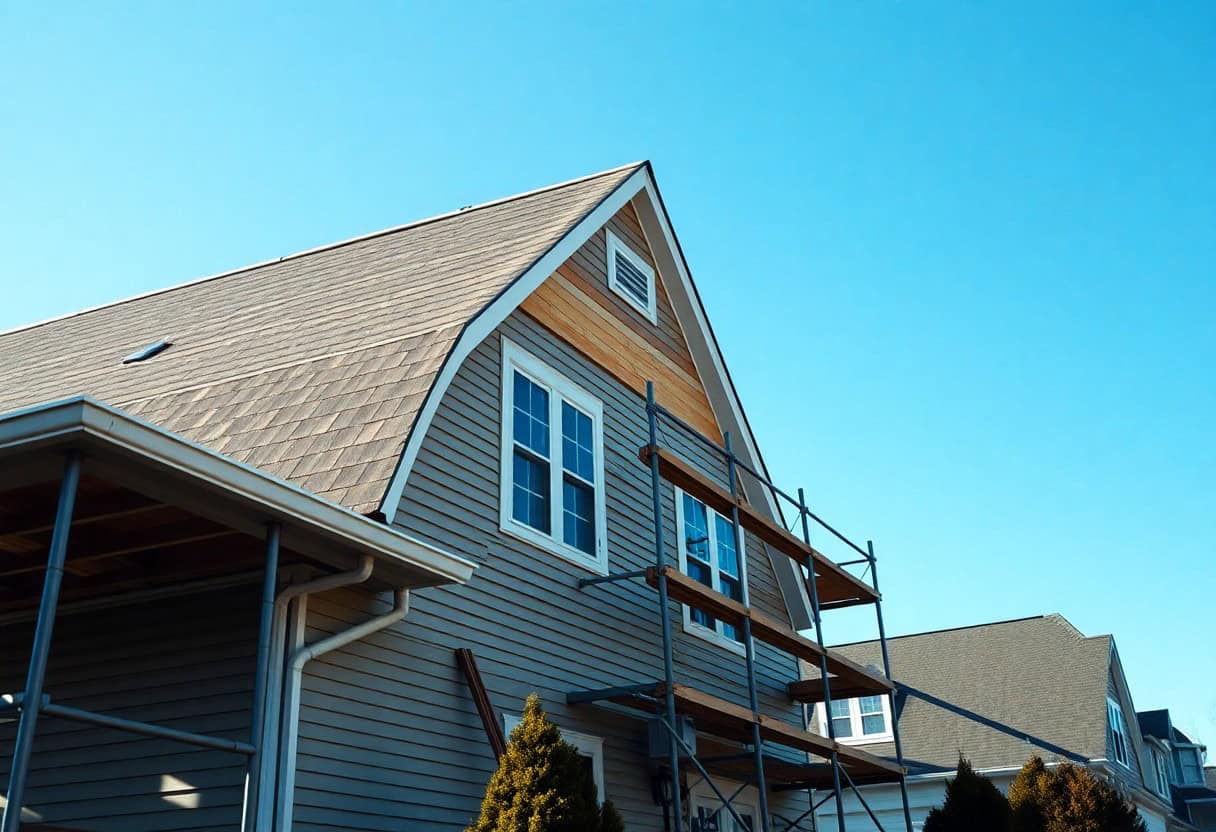Do I need planning permission for a new roof in Haverhill?
Fill Out The Form And We'll Get Back To You

Over the years, many homeowners have found themselves questioning whether they need planning permission when replacing or modifying their roofing. In Haverhill, the regulations surrounding planning permissions can vary based on your specific project and property type. You need to ensure that any planned renovations comply with local planning laws, as they can affect not only your home but also the surrounding area. This guide will help you navigate the intricacies of obtaining the necessary permissions for your new roof.
Understanding Planning Permission
Your understanding of planning permission is crucial when considering any construction work, including a new roof. It is a legal requirement in the UK and helps ensure that developments are appropriate for their surroundings. This process safeguards the environment and the character of the area while providing guidelines for property alterations.
What is Planning Permission?
After you submit a planning application, local authorities assess your proposal to determine its impact on the area. Planning permission is typically needed for major construction projects, but there are exceptions for certain smaller works. Knowing whether you require permission is vital before starting your project.
Types of Developments That Require Permission
To ascertain if your roof project necessitates planning permission, you should understand the types of developments that generally require it. These include:
| Development Type | Details |
|---|---|
| New Builds | Completely new structures need permission. |
| Extensions | Extending your property requires approval. |
| Alterations | Significant changes to your structure may need it. |
| Listed Buildings | Work on listed properties usually requires consent. |
| Change of Use | Changing the use of a building often needs permission. |
Additional guidance can help you identify when planning permission is necessary. Common developments that may require permission include:
- Installing a new roof design or materials.
- Changing the pitch or height of the roof.
- Creating dormer windows or skylights.
- Constructing roof terraces or balconies.
- Formation of outbuildings will often require assessment.
Perceiving the nuances of these requirements is crucial for ensuring compliance.
| Development Type | Details |
|---|---|
| Flat Roofs | May require planning if significantly different from existing structure. |
| Roof Extensions | Typically need permission for larger alterations. |
| Solar Panels | Some may be exempt; however, assessing is advisable. |
| Sustainable Features | Innovations can still sometimes require assessment. |
| Retrospective Applications | May be necessary if work has commenced without permission. |
A comprehensive understanding of these factors can help you navigate the planning landscape effectively. Knowing the regulations surrounding your project is vital for avoiding potential penalties.
- If your project intersects with conservation areas, additional permissions may be needed.
- Assessing your immediate environment can guide your decision-making process.
- Consider consulting a professional if unsure.
- Check local council guidelines for specifics on your area.
- Communication with neighbours could facilitate smoother outcomes.
Perceiving these elements ensures a well-informed approach to your roofing project.
Specific Regulations for Roofs
Clearly, when considering a new roof in Haverhill, you must be aware of specific regulations that may apply. Each local council may impose different rules concerning aesthetics, materials, and dimensions. Therefore, it is imperative to consult your local planning authority before commencing any work to ensure compliance with these regulations and to avoid potential fines or the need for costly alterations later on.
Common Roof Modifications
Roof alterations, such as changing the pitch or adding dormer windows, are frequently undertaken by homeowners. While some modifications may enhance the appearance and functionality of your roof, they may also require planning permission depending on various factors including your property’s location and design. It’s important to assess these alterations carefully before proceeding.
Permitted Development Rights
Between certain limits, you may benefit from permitted development rights, allowing you to make specific changes without obtaining planning permission. This can streamline the process of upgrading your roof, such as replacing tiles or making modest alterations to roof height.
Common to many residential properties, permitted development rights can vary significantly based on factors like property type, area, and whether the building is listed or in a conservation area. It is advisable to verify your eligible rights with your local planning authority to avoid missteps and ensure your project remains hassle-free and compliant.
Exceptions and Special Cases
Clearly, there are exceptions and special cases when it comes to planning permission for a new roof in Haverhill. Always check the Building FAQs provided by the local authority to understand any specific regulations that may apply to your project.
Listed Buildings
Against common assumption, if your property is a listed building, you will likely require special permission for any alterations, including a new roof. You should consult relevant guidelines to ensure compliance.
Conservation Areas
An important consideration is whether your property is located within a conservation area, as this may affect your ability to alter or replace your roof. Additional restrictions may apply to preserve the area’s historical character.
Special care must be taken if your property is situated within a conservation area, as any changes to your roof could be scrutinised closely. Authorities aim to maintain the aesthetic integrity of these unique environments, often making it necessary to use specific materials or designs. Always consult your local planning department before proceeding with any roofing project to ensure compliance with local regulations.
Local Authority Guidelines
Keep in mind that local authority guidelines can vary, and it is imperative to familiarize yourself with the regulations specific to your area. In Haverhill, the local council has specific planning policies that govern various aspects of building, including roofing. It is advisable to check these guidelines before proceeding with your project.
Haverhill’s Planning Policies
On reviewing Haverhill’s planning policies, you will find that certain factors, such as the property’s location and its historical significance, may impact your roofing project. The council aims to maintain the aesthetic and structural integrity of the area, so ensure that your proposed roof aligns with these policies.
Contacting the Local Council
Beside the existing guidelines, it’s wise to get in touch with the local council to clarify any uncertainties you may have regarding your roofing project. They can provide tailored advice relevant to your specific situation.
Authority figures at the local council are there to assist you with your planning queries. When you contact them, be prepared to provide details about your property and the nature of the roofing work you intend to undertake. This will help them give you accurate guidance on whether you need planning permission and what steps you should take next.
Application Process
Not all roofing projects require planning permission; however, if you do, it’s vital to follow the correct application process to ensure compliance with local regulations.
Steps to Apply for Planning Permission
By gathering the necessary information and preparing your application thoroughly, you increase the chances of a successful outcome for your new roof project.
Fees and Documentation Required
Between the various fees involved and the documentation you must submit, preparing your application can be quite detailed.
Apply for planning permission by submitting a completed application form, accompanied by a set of detailed plans and elevations of your proposed roof. You will also need to pay a fee that varies depending on your project’s size and complexity. It’s advisable to check with your local council for the specific requirements, as additional documents may include site plans or design statements to effectively support your application.
Common Myths and Misconceptions
Now, when considering a new roof in Haverhill, various myths can cloud your judgement regarding planning permission. Many believe that roof replacements are always exempt from permission, leading to potential confusion. It’s imperative to clarify these misconceptions to ensure you comply with local regulations and avoid any unnecessary complications during your project.
Misunderstanding Permitted Development
About permitted development rights, it’s a common misperception that all roofing changes fall under these regulations. In reality, there are specific guidelines and limitations, particularly in conservation areas or for listed buildings, which might require you to obtain planning permission even for seemingly minor alterations to your roof.
What Happens if You Proceed Without Permission?
Above all, if you move forward with your roofing project without securing the necessary permissions, you may face serious consequences. Local authorities could enforce fines, or you may be required to remove or alter your newly constructed roof, leading to unnecessary financial loss and delays.
For instance, if the local council discovers that you have completed roofing work without planning permission, they may issue a formal enforcement notice requiring you to rectify the situation. This could involve removing the roof entirely or reverting to the previous structure, which not only incurs additional costs but also prolongs the completion of your project. It’s advisable to fully understand the regulations before beginning any work to protect your investment and ensure compliance.
Conclusion
So, if you are considering replacing or altering your roof in Haverhill, it is imperative to determine whether you need planning permission. Generally, minor alterations may fall under permitted development rights, while significant changes often require formal approval. To ensure compliance with local regulations, it is advisable to consult your local planning authority or a qualified professional. Taking these steps can help you avoid potential issues and guarantee that your roofing project proceeds smoothly.
FAQ
Q: Do I need planning permission for a new roof in Haverhill?
A: In Haverhill, whether you need planning permission for a new roof largely depends on the specific circumstances of your project. If you are replacing a roof with materials and design similar to the existing one, you may not require planning permission due to permitted development rights. However, if you are altering the roof’s shape, height, or materials significantly, it is advisable to consult with your local planning authority to determine if consent is necessary.
Q: How can I find out if my building is listed or in a conservation area, which might affect planning permission for my new roof?
A: You can check if your building is listed or located in a conservation area by visiting the local planning authority’s website or by contacting them directly. They typically provide a resources section where you can search for information related to listed buildings and conservation areas. Such designations may impose additional restrictions and can affect whether planning permission is required for roof alterations.
Q: What steps should I take if I find out I need planning permission for my new roof?
A: If you determine that you need planning permission for your new roof, the first step is to prepare a detailed planning application. This should include plans and drawings of the proposed work, a description of the materials to be used, and any other relevant information. It is also helpful to engage with your neighbours and address any concerns they may have before submitting your application. Once submitted, the planning authority will review your application, and you will receive a decision usually within a few weeks, depending on the complexity of the project.
Re-Roof of Bungalow
The team made a fantastic job of replacing the roof on our bunglaow. They were fasy, reliable and excellent value for money.
Chimney Removal
We employed Wrights Roofs to take down our very old chimney – tht had seen better days. They carefully removed and made good the area where the chimney was. Really impressed.
New Roof
We had an extension built and Wrights came and put a new roof on. They were brilliant, no fuss, great value for money. Thank you.
Roofs, Flat Roofs Chimneys and Solar Panels
If you need roof work on your home, please complete the form or call us today.

